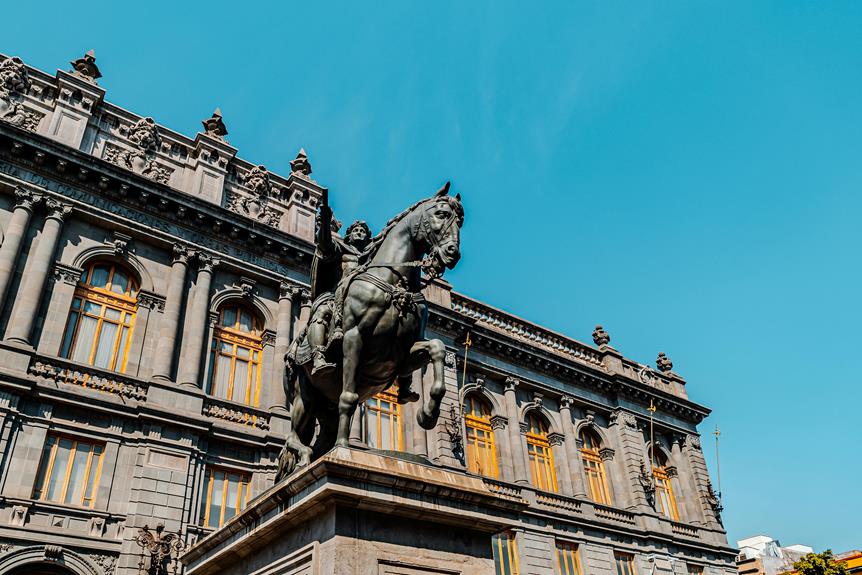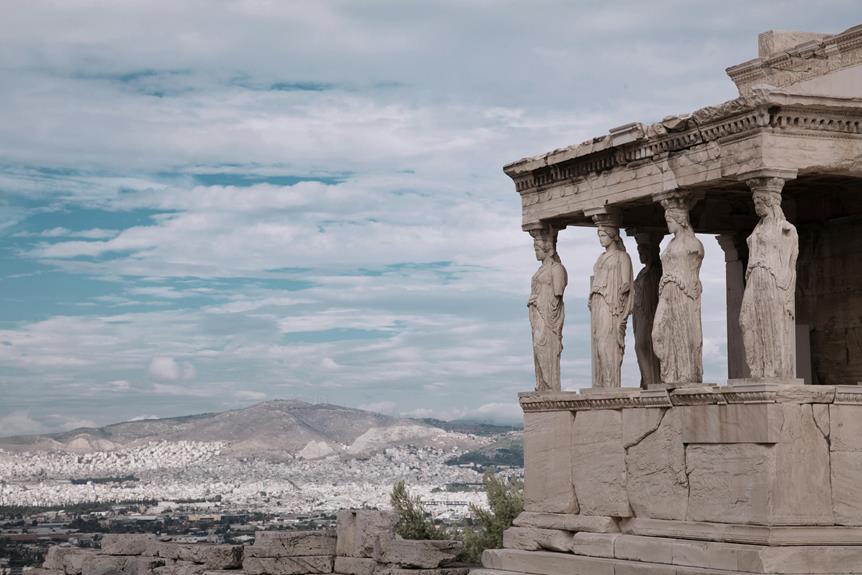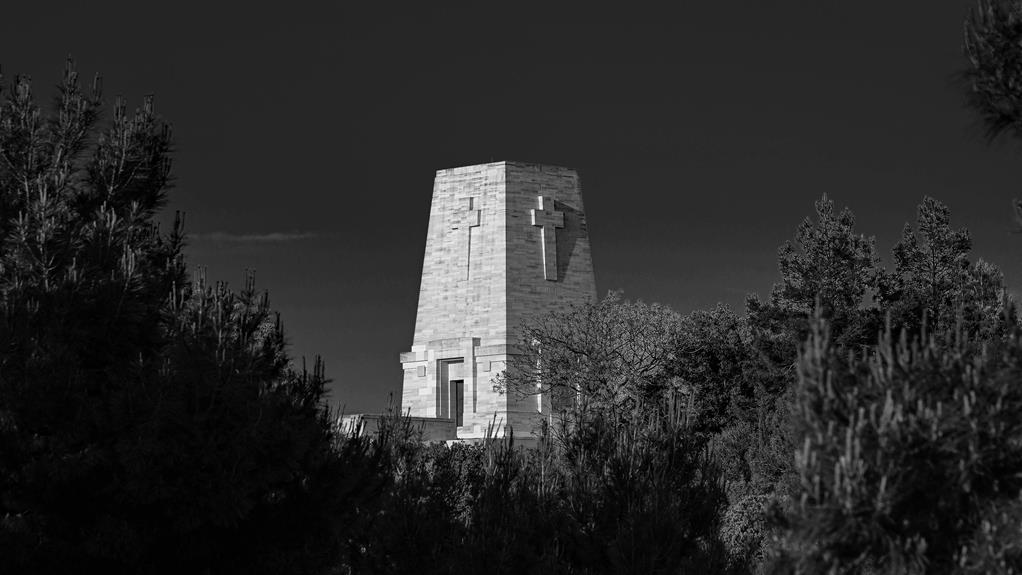The San Francisco Earthquake Site in the USA beckons visitors to witness a pivotal moment frozen in time, where the city's resilience was tested by nature's force. As one stands amidst the remnants of the past, a silent narrative reveals itself, weaving tales of destruction, survival, and rebuilding. The echoes of history reverberate through the streets, prompting reflection on the enduring impact of such catastrophic events. Join us as we unearth the layers of this site, each exposing a piece of San Francisco's unwavering spirit in the face of adversity.
Key Takeaways
- The San Francisco earthquake site marks a significant historical event in 1906.
- It showcases the impact of the earthquake on the city's infrastructure and population.
- Preservation efforts maintain the site's integrity for educational purposes.
- Tourist attractions offer immersive experiences and insights into the earthquake's aftermath.
- Earthquake preparedness measures are crucial in mitigating future disasters.
Historical Background of the Earthquake
During the early hours of April 18, 1906, San Francisco was struck by a devastating earthquake. The causes of this catastrophic event can be traced back to the movement of the North American and Pacific tectonic plates along the San Andreas Fault. The sudden release of accumulated stress along this fault line resulted in a massive rupture, causing the ground to shake violently for over 40 seconds. The earthquake, estimated to have had a magnitude of 7.8, released destructive seismic waves that rippled through the city, toppling buildings, rupturing gas lines, and triggering fires that raged out of control.
The aftermath of the 1906 San Francisco earthquake was nothing short of catastrophic. The city lay in ruins, with an estimated 80% of San Francisco destroyed by the quake and subsequent fires. The human toll was immense, with thousands dead and over 200,000 residents left homeless. The economic impact was equally severe, with property damage amounting to billions of dollars in today's currency.
The disaster prompted widespread introspection and led to significant advancements in earthquake engineering and urban planning practices to mitigate future risks. The resilience and determination of the people of San Francisco in rebuilding their city from the ashes serve as a proof to the human spirit in the face of adversity.
Impact on San Francisco's Infrastructure
The seismic forces released during the 1906 San Francisco earthquake inflicted widespread and profound damage on the city's infrastructure, leading to a significant overhaul of its structural framework. Structural damage was extensive, with many buildings collapsing or suffering severe structural integrity issues. The most affected areas were those built on landfill, such as the Marina District, where liquefaction caused buildings to sink or tilt.
Emergency response efforts were challenged by the scale of destruction. The earthquake ruptured water mains, hindering firefighting efforts and leaving the city vulnerable to widespread fires. The lack of adequate emergency planning exacerbated the situation, as there were not enough resources or personnel to handle the crisis effectively. The destruction of key infrastructure, such as roads, bridges, and railways, further complicated the delivery of aid and rescue operations.
In the aftermath of the earthquake, San Francisco undertook a massive reconstruction effort to improve its infrastructure resilience. Building codes were revised to incorporate seismic design principles, and new technologies, such as base isolation systems, were implemented to mitigate earthquake damage. The city also invested in strengthening critical infrastructure, such as water and power systems, to guarantee better preparedness for future disasters. The 1906 earthquake served as a catalyst for modernizing San Francisco's infrastructure and emergency response capabilities, shaping the city's resilience to seismic events.
Notable Survivors and Stories
Notable survivors and accounts of resilience emerged amidst the aftermath of the 1906 San Francisco earthquake, shedding light on individual experiences that underscored the human capacity to endure and adapt in the face of disaster.
One such survivor was Enrico Caruso, the renowned Italian tenor, who was in San Francisco for a performance at the time of the earthquake. Caruso, along with members of his opera company, braved the chaos and destruction, eventually finding safety near the Golden Gate Park.
Another remarkable account comes from the story of Dr. Alice Marble, a future tennis champion who was just a child when the earthquake struck. Despite losing her family home and experiencing great hardship, Dr. Marble went on to become a celebrated athlete and advocate for women's rights.
Additionally, the resilience of the Chinese-American community in San Francisco during this tumultuous time is exemplified through the story of Mary Moy Quan Ing. Mary, a young girl at the time of the earthquake, displayed incredible strength and determination as she helped her family rebuild their lives and business in the aftermath.
These survivor accounts and resilience stories serve as poignant reminders of the human spirit's ability to persevere in the face of adversity, offering inspiration and hope in the wake of tragedy.
Preservation Efforts and Memorials
Several preservation efforts and memorials have been established to commemorate the impact of the 1906 San Francisco earthquake and honor the resilience of those affected. Despite these efforts, there are inherent preservation challenges due to the historical significance and the need for ongoing maintenance. Community involvement plays a vital role in ensuring the longevity of these sites and their ability to educate future generations about the earthquake's impact.
One of the key preservation challenges faced is the continuous upkeep required to maintain the structural integrity of buildings and monuments affected by the earthquake. Community involvement in fundraising and volunteer efforts is essential to address these challenges effectively. The table below highlights the importance of community involvement in preservation efforts:
| Benefit | Description | Examples |
|---|---|---|
| Financial Support | Contributions for repairs and maintenance | Fundraising events, donations from locals |
| Volunteer Work | Hands-on assistance in preservation activities | Restoration projects, guided tours by volunteers |
| Educational Events | Spreading awareness and educating the public | Workshops, seminars, historical reenactments |
Tourist Attractions at the Site
Tourist influx patterns reveal the evolving appeal of attractions at the San Francisco earthquake site. Visitors are drawn not only to the historical significance of the area but also to the vibrant experiences it offers. Here are some key attractions that contribute to the site's popularity:
- Historic Walking Tours: Guided tours through the preserved ruins and reconstructed buildings provide visitors with a deep understanding of the earthquake's impact. These tours offer a glimpse into the past while highlighting the city's resilience and recovery efforts.
- Interactive Museums: Museums showcasing artifacts and stories from the earthquake offer an immersive learning experience. Interactive exhibits and multimedia presentations engage visitors of all ages, shedding light on the disaster's aftermath and the rebuilding process.
- Culinary Exploration: The site's proximity to diverse neighborhoods allows tourists to indulge in local cuisine. From seafood delicacies at Fisherman's Wharf to authentic Chinatown eateries, visitors can savor a variety of flavors that reflect the city's cultural richness.
- Outdoor Adventures: Outdoor enthusiasts can explore nearby parks and recreational areas for a break from the urban setting. Hiking trails, bike paths, and waterfront promenades offer opportunities for outdoor activities, allowing visitors to appreciate the natural beauty surrounding the earthquake site.
Lessons Learned and Future Preparedness
An examination of the seismic event at the San Francisco earthquake site underscores the importance of learning from past disasters to enhance future preparedness. By analyzing the lessons learned from the devastating earthquake that struck San Francisco in 1906, valuable insights can be gained to bolster preparedness measures and strengthen community resilience against future seismic events.
To effectively prepare for and mitigate the impact of earthquakes, communities must implement a thorough set of preparedness measures. These measures include developing robust emergency response plans, conducting regular drills and exercises, retrofitting buildings to meet current seismic standards, and educating the public on earthquake safety protocols. Additionally, investing in early warning systems and advanced monitoring technologies can provide essential seconds to take protective actions during an earthquake.
The table below highlights key lessons learned from past earthquakes at the San Francisco site and outlines future preparedness strategies to enhance community resilience:
| Lessons Learned | Preparedness Measures | Community Resilience |
|---|---|---|
| Importance of Building Codes | Retrofitting buildings | Enhanced Emergency Response |
| Vulnerability of Infrastructure | Conducting regular drills | Public Education Programs |
| Need for Early Warning Systems | Investing in monitoring technologies | Community Engagement Initiatives |
Frequently Asked Questions
How Did the Earthquake Site Impact Local Wildlife?
The impact of the earthquake site on local wildlife is significant. The event disrupted the biodiversity by altering habitats and causing direct harm to species.
Ecosystem restoration efforts are vital to mitigate these effects, aiming to rebuild ecological balance and support wildlife recovery. Strategic interventions, such as habitat restoration and species conservation programs, are essential in preserving the biodiversity and ensuring long-term ecological resilience following such catastrophic events.
Are There Any Reported Paranormal Activities at the Site?
In various locations worldwide, reports of ghost sightings, supernatural occurrences, and psychic phenomena have been documented. Paranormal investigations aim to explore these phenomena methodically.
Research methodologies often involve data collection and analysis to validate claims. The investigation of alleged paranormal activities requires a scientific approach to distinguish between natural and supernatural phenomena.
Understanding these occurrences can shed light on unexplained events and contribute to the field of paranormal studies.
What Measures Were Taken to Prevent Looting After the Earthquake?
Community security and emergency response are vital aspects after a disaster. Measures like establishing curfews, increasing law enforcement presence, and utilizing neighborhood watch programs were employed to prevent looting post-earthquake.
Quick mobilization of resources, coordination between authorities, and public awareness campaigns were key strategies. These efforts aimed to maintain order, protect property, and guarantee the safety of affected individuals during a challenging time of recovery.
Has Any New Technology Been Developed Based on This Earthquake?
New inventions in seismic technology have emerged in response to past earthquakes, enhancing early warning systems, structural monitoring, and building resilience.
Innovations like real-time ground motion monitoring, advanced building materials, and seismic retrofitting techniques have been developed to mitigate the impact of earthquakes.
These advancements aim to improve safety, reduce damage, and save lives in earthquake-prone regions around the world.
Are There Any Underground Tunnels or Hidden Passageways at the Site?
Exploring underground often reveals historical mysteries, with hidden passageways and tunnels providing a glimpse into the past. These subterranean structures can offer insights into the architectural, social, and cultural landscape of a region.
Surveying for such features demands advanced technologies and methodologies to guarantee accurate documentation and preservation. Uncovering these hidden elements not only enriches our understanding of the site but also contributes to the broader historical narrative of the area.
Conclusion
To sum up, the San Francisco Earthquake Site serves as a symbol of resilience and remembrance in the face of natural disasters. Through its historical significance, preservation efforts, and educational initiatives, the site highlights the importance of preparedness and mitigation strategies for future seismic events.
It stands as a beacon of hope and a reminder of the need for proactive measures to protect lives and infrastructure from the unpredictable forces of nature.


